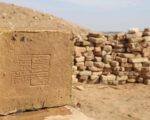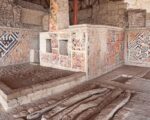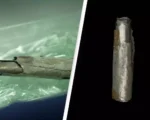The tomb of Thutmose II, the ancient Egyptian pharaoh who ruled approximately 3,500 years ago, has been discovered west of the Valley of the Kings, marking an extraordinary find after a century of searching. This discovery, announced by Egypt’s Ministry of Tourism and Antiquities, is a significant milestone in Egyptology. The tomb, while largely devoid of treasures, provides invaluable information about ancient Egyptian burial practices. Initial examinations suggest that flooding shortly after the burial led to the removal of grave goods, leaving the chamber empty of artefacts and the pharaoh’s mummy. Despite the tomb’s empty state, ceramics inscribed with Thutmose II’s name were found, which helped confirm the tomb’s royal ownership.
While the tomb itself had been untouched by looters, the absence of grave goods and the mummy led archaeologists to consider the possibility of a second, undiscovered burial site where these items were relocated after the flooding. Some experts speculate that a mummy found in a cache at Deir el-Bahari could belong to Thutmose II, though discrepancies in the estimated age of death cast doubt on this theory. Further research is ongoing to explore the potential of finding his remains and the missing burial artifacts, which could shed light on the royal burial customs of ancient Egypt.
The tomb was first identified in October 2022, but it wasn’t until late 2024 and early 2025 that researchers, using analysis of pottery fragments, were able to definitively link it to Thutmose II. Piers Litherland, an Egyptologist from the University of Cambridge who co-led the excavation, shared that a pottery shard bearing a label indicating natron—a substance used in mummification—provided further evidence that the site was once a burial location. This discovery, although still in its early stages, has the potential to unlock deeper understanding of the burial practices of one of Egypt’s long-reigning pharaohs.
The find holds immense historical significance not only for uncovering the tomb of a pharaoh but also for offering new clues about the royal burial rituals of ancient Egypt. Despite the lack of traditional burial riches, the discovery of ceramics and the presence of natron provide critical insights into the embalming and mummification processes, which continue to intrigue researchers and historians alike. As the investigation progresses, there is hope that further revelations about Thutmose II’s final resting place and the royal burial practices of the time will emerge.


















